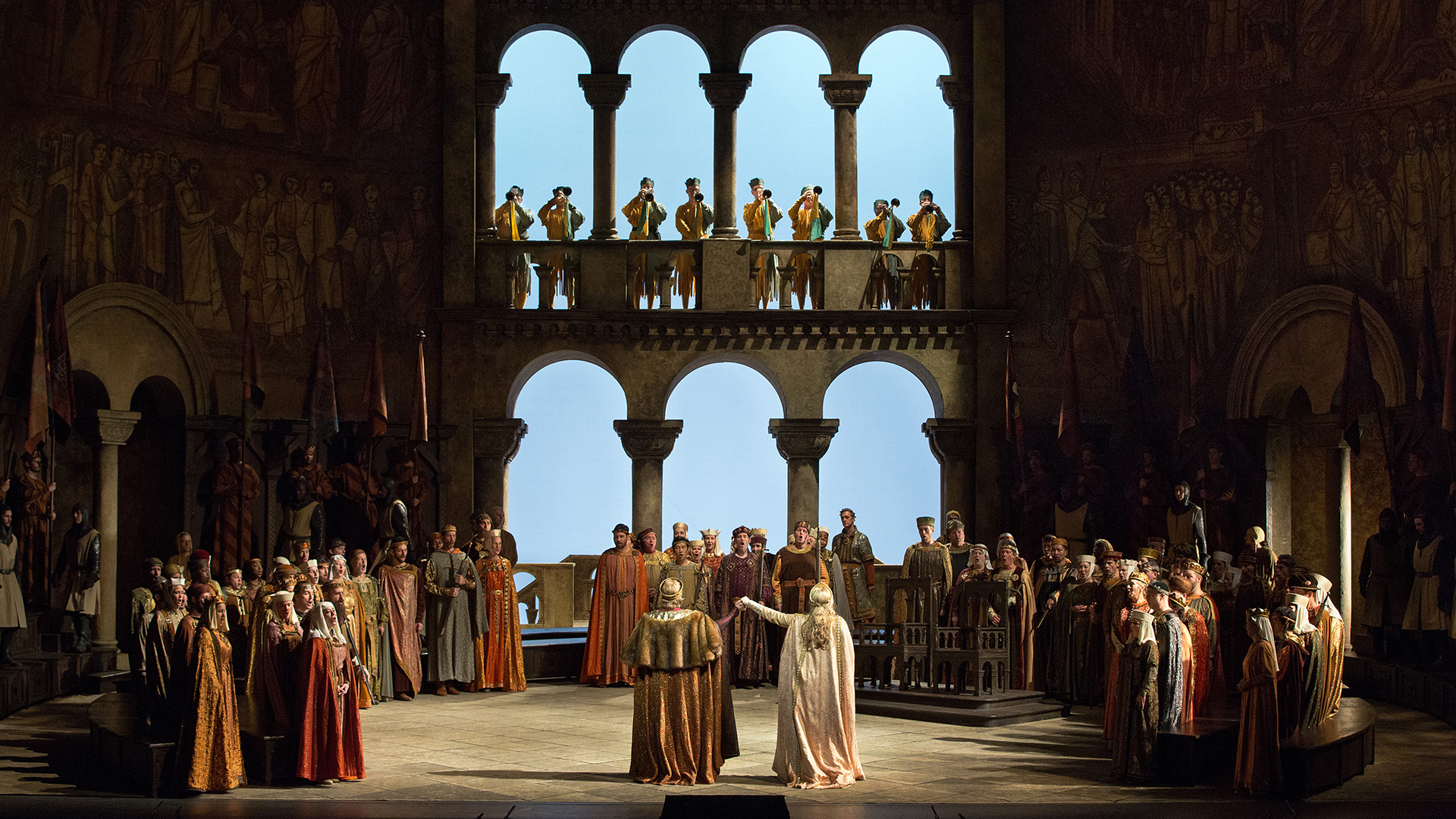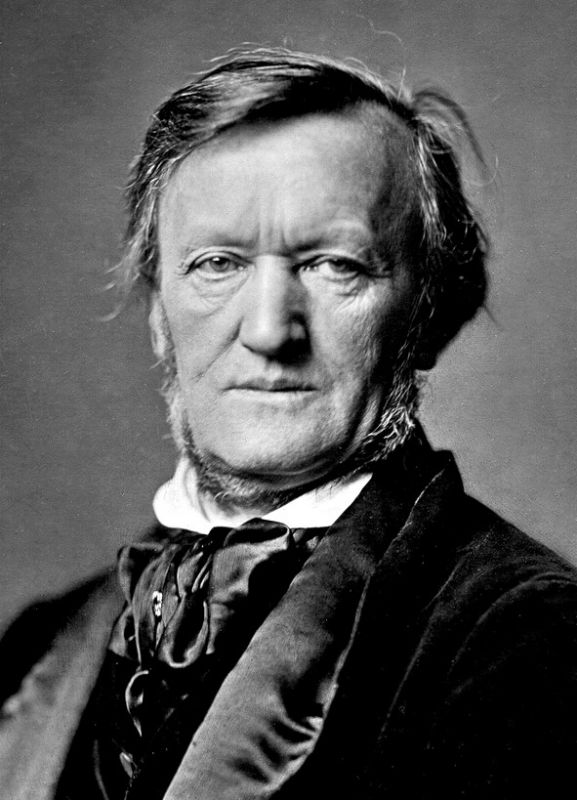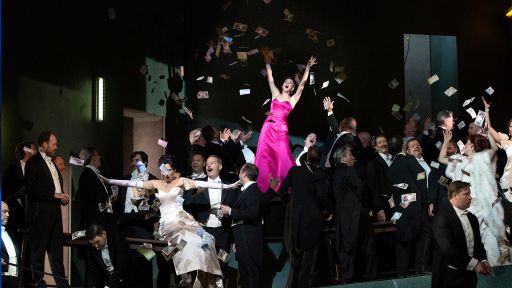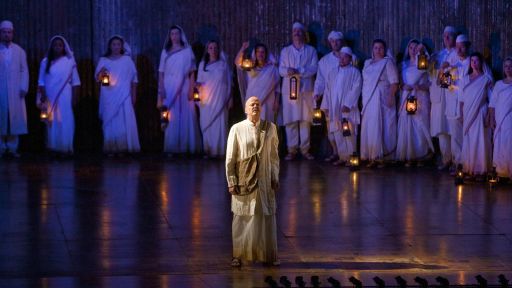 GP at the Met: Tannhäuser premieres March 13, 2016 at noon (check local schedule).
GP at the Met: Tannhäuser premieres March 13, 2016 at noon (check local schedule).
History, myth, and invention come together in Tannhäuser, which had its world premiere in October 1845 at the Court Opera in Dresden, capital of the Kingdom of Saxony. Richard Wagner (May 22, 1813 – February 13, 1883), the opera’s composer and librettist, made several revisions after the original performances, most importantly when he added the Venusberg ballet for the March 1861 French premiere at the Paris Opera — as requested by Emperor Napoleon III. The Metropolitan Opera in New York City premiered the Dresden version of Tannhäuser in 1884, as the opening night production of the company’s second season and its first performance in German. The Met premiere of the “Paris version” of the opera was on January 30, 1889.
Wagner drew on three legends for the opera: a 13th-century German Minnesänger and poet named Tannhäuser; the Sängerkrieg, a minstrel song-singing contest held in 1207; and the mythical grotto of Venus, the goddess of love.

The Wartburg Castle in Thuringia, Germany, dates to 1067.
Tannhäuser’s true historic setting includes the Wartburg Castle, where Saint Elisabeth lived as the wife of the Landgrave of Thuringia in central Germany. The Wartburg would later become associated with Martin Luther, who translated the New Testament from Greek into German there. The pagan–Christian dichotomy expressed in the twofold setting is central to the opera’s dramatic core.
Much of the score of Tannhäuser belongs to the tradition of Romantic opera that Wagner developed and transcended. In Tannhäuser, he expands mid-19th-century models of melody, harmony, and form to take his music to unprecedented expressive heights, both in the vocal and orchestral writing. In Act III, the title character’s narrative abandons conventional melody for a speech-based structure, which is striking for its modernity and points towards Wagner’s later works.
To celebrate the 10th season of GP at the Met, Great Performances presents short highlights of what was happening in the world the year of each opera’s world premiere, and in the year of the Met Opera premiere.
1845 World Premiere

Richard Wagner in 1871.
January 23: The U.S. Congress establishes a uniform date for federal elections: the first Tuesday after the first Monday in November.
January 29: Edgar Allan Poe’s poem “The Raven” is published.
March 13: Felix Mendelssohn’s Violin Concerto premieres in Leipzig.
Fall: The potato blight in northern Europe begins, causing an enormous death toll in Ireland, as well as in Belgium and Prussia.
October 19: Richard Wagner conducts the world premiere of Tannhäuser at the Court Opera in Dresden, capital of the Kingdom of Saxony (Germany is founded in 1871).
December 29: Texas is admitted as the 28th state of the United States.
1861 Paris Premiere
In 1861, American soprano soloist Clara Louise Kellogg has her debut at the New York Academy of Music.
March 3: Tsar Alexander II emancipates serfs in Russia.
March 4: Abraham Lincoln makes his inaugural address as the 16th President of the United States.
March 13: Richard Wagner presents a new version of Tannhäuser at the Paris opera, introducing a ballet in Act I, among other changes.
March 17: The Kingdom of Italy is formed with Victor Emmanuel II as its king.
April 12: The Civil War in the United States begins with the Confederate shelling of Fort Sumter.
December: The French-Mexican War begins in Mexico.
1889 Met Opera Premiere (Paris Version)
January 4: Anton Seidl conducts Richard Wagner’s 1869 opera Das Rheingold at the Metropolitan Opera, the first performance of the Ring Cycle in the United States.
January 30: The Metropolitan Opera premieres the “Paris Version” of Richard Wagner’s Tannhäuser in New York City.
March 12: Russian ballet dancer and choreographer Vaslav Nijinsky is born.
April 21: Giacomo Puccini’s opera Edgar premieres at La Scala in Milan, Italy.
July 8: The first edition of the The Wall Street Journal appears in New York.
September 24: The Nintendo Company Ltd. is founded in Kyoto, Japan. It produces the Hanafuda, a playing card game.
October 6: The Moulin Rouge opens in Paris, France.







